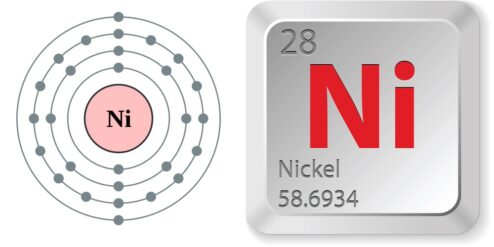Introduzione: The question, "Are potatoes high in nickel?" is a common one among individuals with nickel allergies, and those who are concerned about their nickel intake for health reasons. This article aims to provide a detailed analysis of the nickel content in potatoes, its impact on health, and alternatives to reduce nickel intake. Furthermore, we will also look at expert recommendations regarding safe nickel consumption levels.
Understanding the Composition of Potatoes
Potatoes are a rich source of carbohydrates, fiber, and various vitamins and minerals, including Vitamin C, Vitamin B6, and potassium. They also contain a small amount of protein and virtually no fat. The nutrient composition of potatoes can vary depending on the variety and how they are prepared. However, potatoes are not typically considered a high source of any particular mineral, including nickel. The presence of nickel in potatoes, like in all plants, is mainly due to the absorption from the soil in which they are grown.
Nickel Content in Common Foods
Nickel is a trace element found in varying amounts in almost all foods. Foods that are typically high in nickel include whole grains, nuts, dried beans, peas, lentils, chocolate, and certain types of fish and shellfish. Vegetables, fruits, and animal products generally contain lower amounts of nickel. The nickel content in food can be influenced by several factors, including the nickel content of the soil in which plants are grown or the water that animals drink.
Are Potatoes High in Nickel? A Detailed Analysis
According to various studies, the nickel content in potatoes is relatively low compared to other foods. The actual amount can vary based on factors such as the type of potato, the soil in which it was grown, and the method of preparation. Boiling potatoes, for example, can reduce their nickel content. However, it’s important to note that even foods with lower nickel content can contribute to the overall daily intake of nickel, especially if consumed in large quantities.
Impact of High Nickel Foods on Health
Nickel is an essential trace element for the human body, but excessive intake can lead to health problems. High levels of nickel can cause skin reactions, including rashes and dermatitis, particularly in people who are allergic to this element. Long-term exposure to high levels of nickel can also lead to more serious health problems, such as lung infections, heart disorders, and even cancer. However, these health risks are generally associated with exposure to high levels of nickel in the environment or workplace, rather than dietary intake.
Reducing Nickel Intake: Alternatives to Potatoes
If you are concerned about your nickel intake, there are several alternatives to potatoes. Rice, for example, is a low-nickel carbohydrate source. Other vegetables such as cucumbers, radishes, and zucchini also have lower nickel content. It’s also beneficial to vary your diet to avoid excessive intake of any one mineral. However, if you have a nickel allergy, it’s important to consult with a healthcare professional or a dietitian for personalized advice.
Expert Recommendations: Safe Nickel Consumption Levels
According to the World Health Organization (WHO), the safe upper limit for daily nickel intake is 250 micrograms for adults. This is based on the potential for nickel to cause allergic reactions and other health problems. However, most people typically consume less than this amount through their diet. If you are concerned about your nickel intake, it’s best to consult with a healthcare professional who can provide personalized advice based on your individual health needs.
Conclusioni: In conclusion, while potatoes do contain nickel, their levels are relatively low compared to other foods. If you are concerned about your nickel intake, consider diversifying your diet or consulting with a healthcare professional. Remember, nickel is just one of many minerals in our diet, and balance is key to maintaining good health.
Per approfondire:
- World Health Organization: Nickel in Drinking-water – Provides detailed information about the effects of nickel on health and the safe consumption levels.
- USDA National Nutrient Database – A comprehensive source of information on the nutrient content of various foods, including nickel.
- American Academy of Allergy, Asthma & Immunology: Nickel Allergy – Offers information about nickel allergies, including symptoms, diagnosis, and treatment.
- National Institutes of Health: Nickel – Provides detailed information about the health effects of nickel, dietary sources, and recommended intakes.
- European Food Safety Authority: Dietary exposure to nickel – A scientific opinion on the risks associated with dietary exposure to nickel.


